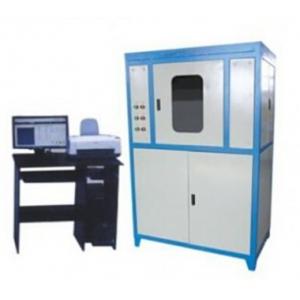

Add to Cart
Thermal Conductivity System Tester
Application
Applicable to: thermal conductivity of clay and sand dry test specimens, the thermal resistance of the specimen should be greater than 0.1m2.K/W. The heat flow meter is used to detect the thermal conductivity and thermal resistance of clay, sand, etc., and the computer is fully automated to generate an experimental report. The instrument uses a stable hot surface temperature on one side of the sample. Heat is transferred to the cold surface (room temperature) through the sample, and the transferred heat flow is measured to calculate the thermal conductivity and thermal resistance. Specially equipped with geotechnical sample cylinder and specific heat capacity test device, it can be used for thermal analysis and specific heat capacity measurement of soil such as clay and sand.
Technical parameters
| Specimen specifications | 300 × 300 (mm) picture keywords |
| Thickness | 10 to 40 (mm) (preferably 25 mm) |
| Cold plate temperature | 10 ° C ~ 50 ° C |
| Hot plate temperature Room temperature | ~ 80 ° C |
| Test accuracy | ≤ 3% |
| Test repeatability | <1% |
| Power supply voltage | AC 220V total power 2KW |
| Use environment | 23±2°C in the laboratory with air conditioning |
| Dimensions | length × width × height 800 × 600 × 1600 (mm) |
Working principle
Thermal conductivity tester, using double test piece measuring
device, protective hot plate group: package
Including heating unit and cooling unit.
The heating unit should be divided into a central metering unit and
a guard unit that surrounds the metering unit separated by a gap
and is equipped with a heat insulating device.
The hot unit adopts a double hot surface heater, and the cold plate
and the double hot surface are symmetrically arranged. The
thickness of the test piece is set to move the space of the cold
plate, and the tested piece is vertically placed in two flat plates
having a constant temperature parallel to each other. In the steady
state, the measuring part of the test piece has a constant heat
flow, and the one-dimensional constant heat flow rate Q flowing
through the metering unit, the area A of the measuring unit, the
temperature difference ΔT of the cold and hot surface of the test
piece can be measured by measuring the steady state. Calculate the
thermal resistance R of the test piece, and according to the
thickness of the test piece, the thermal conductivity of the test
piece can be accurately calculated.
